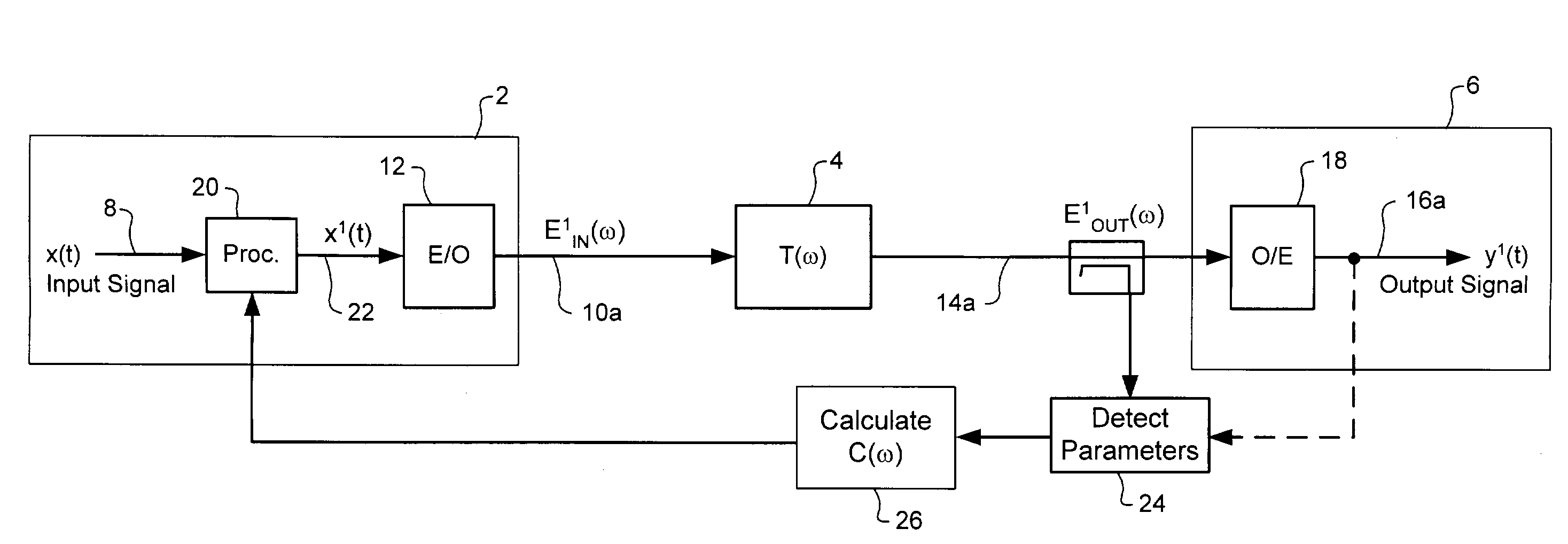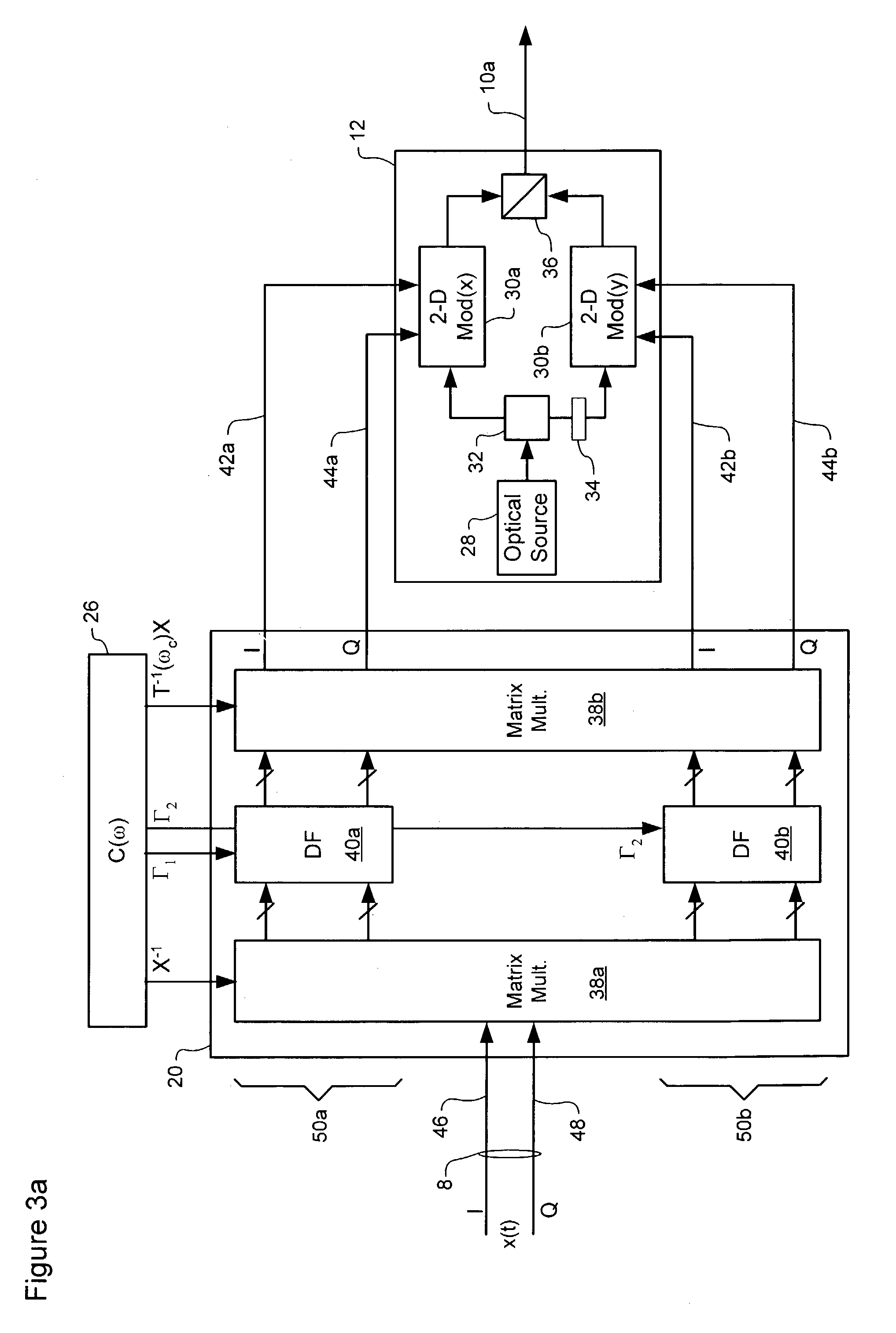Electrical domain mitigation of polarization dependent effects in an optical communications system
a technology electric domains, applied in the field of electric domain compensation of polarization dependent effects in optical communication systems, can solve the problems of polarization dependent loss, general unpolarized emission noise, and loss of optical communication systems, and achieve cost-effective effects of mitigating the effect of polarization
- Summary
- Abstract
- Description
- Claims
- Application Information
AI Technical Summary
Benefits of technology
Problems solved by technology
Method used
Image
Examples
Embodiment Construction
[0034]The present invention provides a method and system for mitigating polarization dependent effects (PDEs), including both polarization mode dispersion (PMD) and polarization dependent loss (PDL), in an optical communications system. FIG. 1 is a block diagram schematically illustrating principal elements of a conventional optical communications system in which the present invention may be deployed. FIG. 2 is a block diagram schematically illustrating principal operations in accordance with the method of the present invention.
[0035]As shown in FIG. 1, an optical communications system is represented by a transmitter 2 and a receiver 6 separated by an optical link 4. As is well known in the art, the link 4 may include multiple optical fiber spans separated by active optical devices such as, for example, optical amplifiers, channel equalizers etc. For simplicity of illustration, these elements are not shown in the drawings. Signal distortions due to Polarization Mode Dispersion (PMD)...
PUM
 Login to View More
Login to View More Abstract
Description
Claims
Application Information
 Login to View More
Login to View More - R&D
- Intellectual Property
- Life Sciences
- Materials
- Tech Scout
- Unparalleled Data Quality
- Higher Quality Content
- 60% Fewer Hallucinations
Browse by: Latest US Patents, China's latest patents, Technical Efficacy Thesaurus, Application Domain, Technology Topic, Popular Technical Reports.
© 2025 PatSnap. All rights reserved.Legal|Privacy policy|Modern Slavery Act Transparency Statement|Sitemap|About US| Contact US: help@patsnap.com



